Ground Reports
Hridayapath, Dispatch #9: Culture, Infrastructure And Cash Transfers Power Assam, As Progress Reaches Nooks And Corners Of State
Banuchandar Nagarajan
Apr 22, 2024, 12:26 PM | Updated Aug 09, 2024, 12:09 PM IST
Save & read from anywhere!
Bookmark stories for easy access on any device or the Swarajya app.
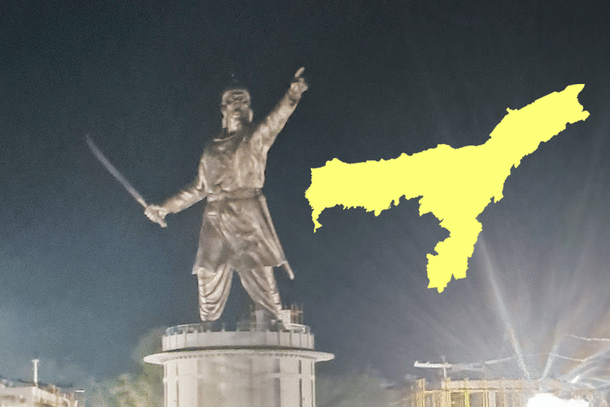
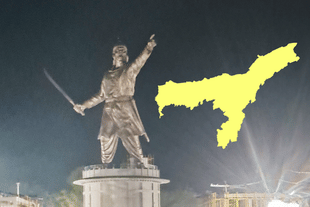
We drive around Guwahati for an hour to see what has changed. The city's urban transformation has been phenomenal over the last five years.
The new flyovers, riverfront development, bridges across the Brahmaputra, a new ferry service terminal (under construction), urban parks etc, are giving the capital city a new character.
And cleanliness has improved tremendously. There are more hotel options and quite a few nice restaurants as well. Sankardev Road seems to be happening with glitzy shopping malls.
West Karbi Anglong
I wanted to visit an autonomous district, and hone in on West Karbi Anglong (WKA)
Roads in WKA are unwelcoming. I thought that I have finally come to a place where development has not penetrated. It is home to the tribal Karbi community.
WKA is an autonomous district. They elect their own council headed by a CEM (chief executive member). They work in tandem with the District Collector and the state government to execute programmes in the areas.
We encounter a few tea garden workers. I try to strike a conversation with them, but we run to language issues. So I was sceptical as I descend into a village called Borgaon. A gentleman responds in affirmative, to my driver's, "humari bhasha jaante ho?".
The next 45 minutes gladdened my heart the most in the whole trip. To my surprise the villagers knew about more government schemes that I remembered and they take advantage of almost every scheme.
The villager takes me to a shop next to a common service centre (CSC), where there was a bunch of folks chit-chatting. As I neared the CSC, I saw a person was pressing his thumb to record his biometrics (to avail services under the NPS, I learn later).
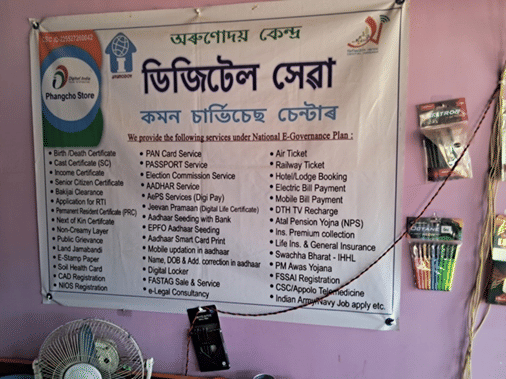
Sarim Phangcho takes the lead in the conversation and points me to a house, which was built under the PM Awas Yojana. With toilets have been built five years ago, they were going to refurbish them soon. The Jal Jeevan Mission is on full swing and they have water connections in almost each household.
They have taken up a water conservation project under "Mission Amrit Sarovar" with gusto. They produce broomsticks, banana, tea and bamboo.
The reclassification of bamboo as a grass (or in sarkari jargon, non-timber forest product) in 2017, has been a game-changer for the local economy here. He has asked his nephew, Samrat Phangcho, who runs the CSC, to explore loans under the MUDRA Yojana to set up a goatery and a piggery.
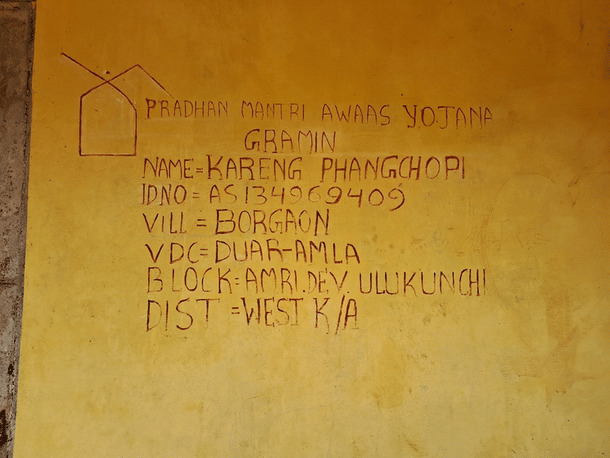
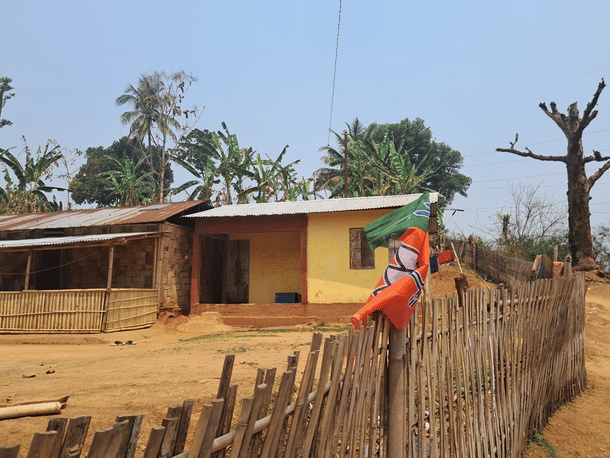
I ask him about whether women have benefitted from the government. He immediately mentions the "Orunodoi" scheme of the state government, under which women get Rs 1,000 every month.
The local women are preparing for the 'Lakhpati Didi' programme for self-help groups (The Assam government has topped it up with a "lakhpati baideos" programme).
Women in the village have availed assistance through the PM Matru Vandana Yojana during pregnancy. They also avail health insurance under Ayushman Bharat.
I ask Sarim how come he knows so much about all the schemes. He points to his smartphone. He also credits his village pradhan, who he says is a very good leader that keeps people informed about the entitlements.
I think the central government should start a massive capacity-building programme for the pradhans around the country. A good leader can make a huge difference to the lives of his fellow villagers.
He says that the biggest change of the last 10 years is the near 24x7 electricity supply. "Kids are able to study, and wives watch TV," he says with a smile.
There is a survey going for the PM Surya Ghar programme. I already see a couple of solar panels around here. They say that the next time I visit them, they will have solar powered lights everywhere.
He said that he is going to take up my comment on the poor roads in the next village council meeting and he hoped that the repair will happen soon. I could see that he almost felt embarrassed. That is the rising expectation of New India.
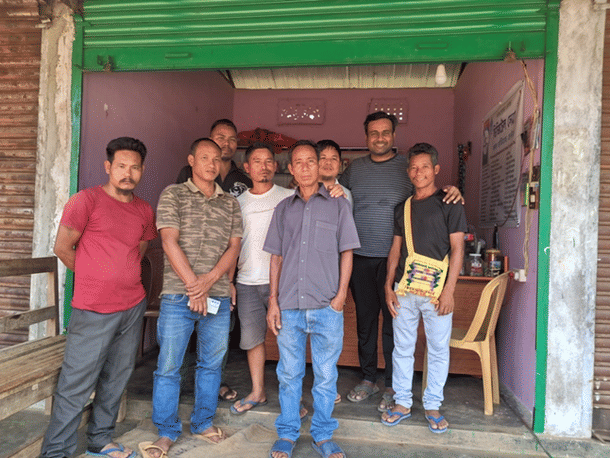
I ask Sarim what in his opinion has been the main driver of the change over the last decade. Without hesitation he says, "PM Modi". I am stunned that the poorest person in the remotest part credits the top-most man in the governance hierarchy for his welfare.
He says that the coordination between "PM-CM-CEM" is very good — sort of a triple-engine sarkar here.
The constituency has been rechristened as Diphu. I see Bharatiya Janata Party (BJP) flags everywhere. Their sitting Member of Parliament (MP), Horen Sing Bey, is from the BJP. The locals feel that the new BJP candidate, Amarsing Tisso, will sail through.
Kaziranga
We drove along the southern banks of the Brahmaputra bordering the Kaziranga National Park. There are so many rhinos to see en-route. The wardens were shooing them away, lest they get on to the highway. I try hard, but in vain, to convince my driver that rhinos and hippos are two different creatures.
At Bamoni village, we get into a casual conversation with two tea garden workers, Shashankar and John Nayak.
Here, I get a good sense of the double-engine sarkar. For tea garden workers the PM Awas Yojana has been a huge boost.
Till a few years ago, the workers had to get approval from the owners of the tea estate for constructing houses nearby.
Now, Chief Minister Himanta Biswa Sarma has made state government officers issue no-objection certificates (NOCs) instead of the companies.
Clean drinking water supply as increased even in the tea estates. Both of their families have availed the Ayushman Bharat Health Insurance Scheme.
Under a scheme of the tea board, these people receive Rs 5,000 rupees per bigha. This is apart from Rs 2,000 of Krishi Samman Nidhi. The board has also taken them on tours to Kerala to make them learn about efficient operation and marketing practices.
The conversation veers to politics. The village falls under the newly-formed Kaziranga parliamentary constituency. It was under Kaliabor before.
BJP has fielded current Rajya Sabha MP, Kamakhya Prasad Tesa. He had represented Jorhat from 2014-19. He is against Roselina Tirkey, an MLA from the Congress.
They contend that Tesa is going to win by a big margin, especially after the minority dominated assembly segments have gone to Nagaon. (They also feel that votes are going to be votes split between AIUDF and Congress in Nagaon and the BJP candidate may scrape through there).
The earlier Kaliabor MP, Gaurav Gogoi, is now contesting from Jorhat. Nayak says people voted for his polite personality and for the fact that he was Tarun Gogoi's son. He was not a kamdar MP.
Hindus and Muslims live together in harmony in the region. But the Muslims are against CM Sarma. He has got people arrested recently on the charges of child marriage.
They say that Muslim population is increasing quite a bit in the area as they have a lot of children, and consequently the families keep getting poorer. Also, Chief Minister Sarma has begun to imitate what Chief Minister Yogi Adityanath did in Uttar Pradesh with the bulldozers.
In the middle of the conversation the old man, Shashankar, suddenly got up and put a shawl around me. He said it is a janjati shawl. I pay my respects as well. Prime Minister Modi was in Kaziranga just a few weeks ago. These people had a chance to see him.
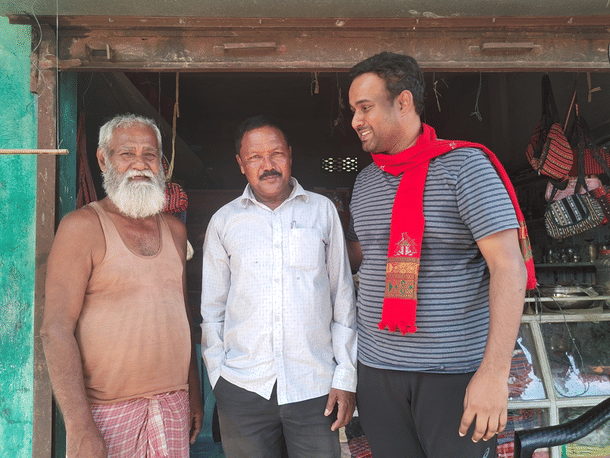
The wildlife reserve masks the real calling card of Kaziranga, the large tea gardens. Many big companies have tea gardens here including the Tatas.
It is blasphemous to not buy tea from Assam. I stop at a retail store with an matter-of-factly name, "Taste and Buy".
The owner, Pintu Bora, convinces me to buy "white tea". It is a premium tea that sells for Rs 10,000 a kilo. Being a "premium garib", I got a 25 gram packet. He eagerly teaches me how make it properly.
We get chatting about the tea business. He runs small-scale tea factory behind the retail store. He has his own small tea garden, but he also purchases from other small farms. His factory sells tea to Tatas and Hindustan Tea at the auctions.
He is very happy with the development in this area. He raves about the roads and the water supply. He joins my list of people pleased with the PM Awas Yojana.
He says that the Tea Board is pretty helpful. They come to his factory and give free consultation on how to improve the processes. They also advise him on packaging, marketing, etc. He is content selling tea to the big Indian companies and is not really thinking about foreign markets.
Shop comes under Kaziranga constituency newly constituted. The local MLA, Asom Gana Parishad's Keshab Mahanta, is a cabinet minister and considered close to the Chief Minister. Bora says lot of development activities get implemented very fast.
He says that Congress is almost a shell of its past and it does not inspire people now. Though the Congress ruled the state for quite a long time, it has declined very fast. He adds, "People feel that PM Modi loves Assam and they love him back."
Epilogue
Travelling in Assam, I feel that Prime Minister Modi's biggest achievement has been hard-headed implementation assisted by technology. The intellectuals did not understand that it is not the crafting of clever policies but the hard-knuckled implementation that was sorely missing in India.
How he managed to extract results from the same system is still not researched well. How he tamed the bureaucracy — the man management aspect of it as prime minister himself would say — is the real governance story of the last 10 years.
Traffic in Jorhat city is a mess. Prime Minister Modi had unveiled a massive 125 feet statue of Ahom General Lachit Borphukan at his samadhi in Jorhat. Not far away is the "Dhekiakhowa Bor Namgar" built by saint Madhavdeva where shines the "eternal flame".
I am positive that we are slowly but surely becoming worthy descendants of these great men. And, the last few years have been just the beginning for greater glories.
This report is part of Swarajya's 50 Ground Stories Project - an attempt to throw light on themes and topics that are often overlooked or looked down. You can support this initiative by sponsoring as little as ₹2999. Click here for more details.
Read the previous articles in this series:
Hridayapath, Dispatch 4 — 'Phirse Modi Ho, Bihar Me Bahar Ho'
Hridayapath, Dispatch 5: Too Much Negativity Peddled About Bihar — Notes From Mithila And Seemanchal
Hridayapath, Dispatch 6: North Bengal — A BJP Fortress In The Making
Hridayapath, Dispatch 8: On Politics, Progress, And Poetry From Assam
Banuchandar is a political and public policy advisor. He posts at @Banu4Bharat.





